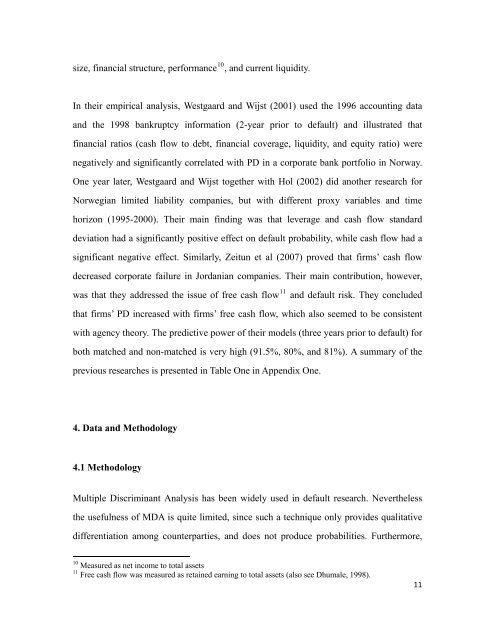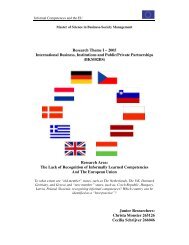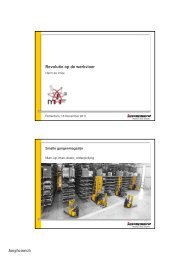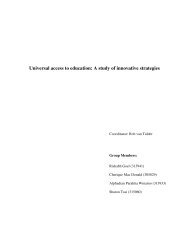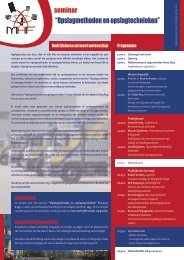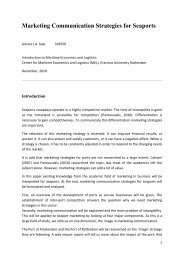Financial Ratios as Predictors of Failure: Evidence from ... - ERIM
Financial Ratios as Predictors of Failure: Evidence from ... - ERIM
Financial Ratios as Predictors of Failure: Evidence from ... - ERIM
You also want an ePaper? Increase the reach of your titles
YUMPU automatically turns print PDFs into web optimized ePapers that Google loves.
size, financial structure, performance 10 , and current liquidity.<br />
In their empirical analysis, Westgaard and Wijst (2001) used the 1996 accounting data<br />
and the 1998 bankruptcy information (2-year prior to default) and illustrated that<br />
financial ratios (c<strong>as</strong>h flow to debt, financial coverage, liquidity, and equity ratio) were<br />
negatively and significantly correlated with PD in a corporate bank portfolio in Norway.<br />
One year later, Westgaard and Wijst together with Hol (2002) did another research for<br />
Norwegian limited liability companies, but with different proxy variables and time<br />
horizon (1995-2000). Their main finding w<strong>as</strong> that leverage and c<strong>as</strong>h flow standard<br />
deviation had a significantly positive effect on default probability, while c<strong>as</strong>h flow had a<br />
significant negative effect. Similarly, Zeitun et al (2007) proved that firms’ c<strong>as</strong>h flow<br />
decre<strong>as</strong>ed corporate failure in Jordanian companies. Their main contribution, however,<br />
w<strong>as</strong> that they addressed the issue <strong>of</strong> free c<strong>as</strong>h flow 11 and default risk. They concluded<br />
that firms’ PD incre<strong>as</strong>ed with firms’ free c<strong>as</strong>h flow, which also seemed to be consistent<br />
with agency theory. The predictive power <strong>of</strong> their models (three years prior to default) for<br />
both matched and non-matched is very high (91.5%, 80%, and 81%). A summary <strong>of</strong> the<br />
previous researches is presented in Table One in Appendix One.<br />
4. Data and Methodology<br />
4.1 Methodology<br />
Multiple Discriminant Analysis h<strong>as</strong> been widely used in default research. Nevertheless<br />
the usefulness <strong>of</strong> MDA is quite limited, since such a technique only provides qualitative<br />
differentiation among counterparties, and does not produce probabilities. Furthermore,<br />
10 Me<strong>as</strong>ured <strong>as</strong> net income to total <strong>as</strong>sets<br />
11 Free c<strong>as</strong>h flow w<strong>as</strong> me<strong>as</strong>ured <strong>as</strong> retained earning to total <strong>as</strong>sets (also see Dhumale, 1998).<br />
11


